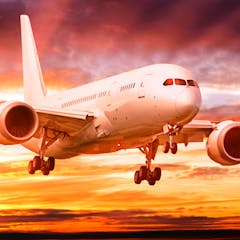
Articles on Aircraft
Displaying 1 - 20 of 66 articles

Analysis of data from underwater microphones could help researchers discover the fate of missing flight MH370.

With severe injuries from turbulence on a recent Singapore Airlines flight, questions abound over why airplanes encounter this phenomenon and whether climate change really will make it worse.

There have been so many problems with the 737 Max that the nuclear option may be the best way forward.

The chaos caused over the August bank holiday may well have been preventable.

54 people have died in crashes of the controversial ‘tiltrotor’ V-22 Osprey aircraft – but the military advantage it offers is too great to be discounted.

The last of four new Boeing P-8A Poseidon aircraft has landed, substantially increasing New Zealand’s surveillance – and military – capacity. But how they are best deployed is open to debate.

Unlike our toilets at home, plane toilets have to ‘suck’ the waste with a vacuum system. But don’t worry, it doesn’t get released into the air.

When something disrupts the smooth, laminar flow of high-altitude winds, your flight might get a little bumpy.

Aviation has long been shamed for its carbon footprint. But cutting non-CO2 emissions may hold the key to rapid change.

For years it has lagged Airbus, but that might be coming to an end.

In some ways, a space rocket and a passenger aircraft fly much the same. But there is one big reason we can’t just take an aircraft into space.

Almost two years after crashing twice within five months and being pulled out of service, the Boeing 737 Max’s return to the skies has now been approved.

The Boeing 737 MAX, which has been grounded since 2019 following two fatal crashes, is expected to be cleared to fly again. An aviation law expert proposes a way to improve the certification process.

Will the joy and exhilaration of travel return after the COVID-19 pandemic? Yes, but with a new value proposition built around safe and secure travel.

Aircraft cabins have been germ hotspots since long before this pandemic. More ‘microbiology literacy’ is needed among the general public for this to improve.

The airline industry has faced many crises before. But these pale in comparison to the economic hit that airlines are currently facing.

Washing hands and coughing into your elbow can help limit the spread of infectious diseases on planes and around the globe. So why don’t passengers read about this in their inflight magazines?

Volcanic ash is made of tiny crystal and rock fragments that during an eruption can reach as high as the cruising altitude of commercial aircraft, and that’s a concern for airlines.

Cabin crew play a vital role in helping passengers during any aircraft emergency. But how many do you really need on a flight?

A pilot and researcher knows that airplanes are full of sensors – and finds a way onboard computers can use the data to detect equipment failure and tell pilots what’s a real emergency and what’s not.
